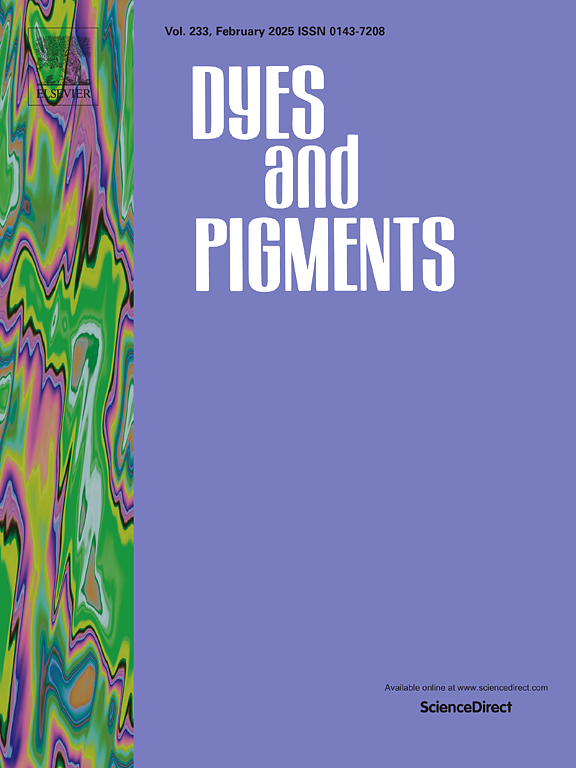Cyano substituted stilbene-based polymers for OFETs: From p-type to n-type
IF 4.1
3区 工程技术
Q2 CHEMISTRY, APPLIED
引用次数: 0
Abstract
The performance of n-type semiconductor materials, typically the charge transport mobility, greatly fall behind compared to those in the p-type ones, which limiting the development of the semiconductor applications. Thus, the molecular design for n-type semiconductor is both crucial and challenging. In this work, three polymers containing isoindigo and stilbene units with varying numbers of cyano-substituted were designed and applied as the semiconductor for the organic field-effect transistors (OFETs). The introduction of cyano groups transforms the stilbene from electron-rich to electron-deficient. As a consequence, the polymers transition from a donor-acceptor type (P0) to an acceptor-acceptor type (P1, P2). With an increasing number of the cyano groups, both of the HOMO and LUMO energy levels of the polymers were decreased, with P1 and P2 exhibiting particularly low LUMO energy levels (<−4.15 eV) and ultra-low HOMO levels (<−5.7 eV). Therefore, P0 exhibited p-type semiconductor behavior with the hole transport mobility of 0.40 cm2 V−1 s−1, while cyano-substituted P1 and P2 displayed n-type characteristic with 0.62 cm2 V−1 s−1 (P1), and 0.83 cm2 V−1 s−1 (P2), respectively. In addition, the aggregation and molecular packing of the polymers in the thin film state improved with the increasing number of cyano units in the single repeat units, which facilitated interchain charge transport. Thus, P2 exhibited the highest charge transport mobility among the three polymers. This work demonstrates that introducing cyano units into the polymer backbone to synthesize an acceptor-acceptor (A-A) type polymer is a simple and effective strategy for developing n-type semiconductor materials. In addition, incorporating cyano units into the polymer backbone not only increases the electron-deficient character of the polymers and alters their charge transport properties but also might enhance charge transport mobility.

求助全文
约1分钟内获得全文
求助全文
来源期刊

Dyes and Pigments
工程技术-材料科学:纺织
CiteScore
8.20
自引率
13.30%
发文量
933
审稿时长
33 days
期刊介绍:
Dyes and Pigments covers the scientific and technical aspects of the chemistry and physics of dyes, pigments and their intermediates. Emphasis is placed on the properties of the colouring matters themselves rather than on their applications or the system in which they may be applied.
Thus the journal accepts research and review papers on the synthesis of dyes, pigments and intermediates, their physical or chemical properties, e.g. spectroscopic, surface, solution or solid state characteristics, the physical aspects of their preparation, e.g. precipitation, nucleation and growth, crystal formation, liquid crystalline characteristics, their photochemical, ecological or biological properties and the relationship between colour and chemical constitution. However, papers are considered which deal with the more fundamental aspects of colourant application and of the interactions of colourants with substrates or media.
The journal will interest a wide variety of workers in a range of disciplines whose work involves dyes, pigments and their intermediates, and provides a platform for investigators with common interests but diverse fields of activity such as cosmetics, reprographics, dye and pigment synthesis, medical research, polymers, etc.
 求助内容:
求助内容: 应助结果提醒方式:
应助结果提醒方式:


